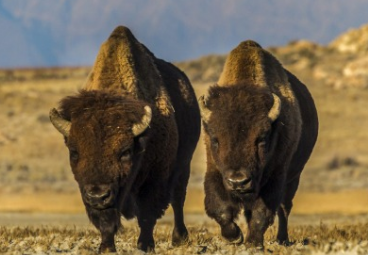Austin oversees the herd of buffalo that graze below us, and the properties that contain them. He works for the American Prairie Reserve, a conservation organization seeking to create a massive protected area in central Montana and repopulate it with the wildlife of bygone days. Imagine: the plains as they looked in 1805, when explorer Meriwether Lewis climbed to the top of a similar bluff just east of here. "The whole face of the country was covered with herds of Buffaloes, Elk & Antelopes," Lewis wrote in his journal.

And then, in outrageously short order, the animals were gone. Historians estimate there were tens of millions of bison -- the term is interchangeable with buffalo -- when Lewis and fellow explorer William Clark traversed the northern plains; by the mid-1880s, fewer than a thousand remained. Other prairie creatures -- grizzlies, elk, pronghorn, bighorn sheep, wolves, swift foxes, black-footed ferrets -- saw similar declines as settlement spread west. The migrants slaughtered wildlife for cash and sport, built fences and roads that fractured the animals' habitat, trailed livestock that competed for forage and spread disease, and broke the prairie with their plows in order to farm it. Once broken, it takes decades, even centuries, to fix.











